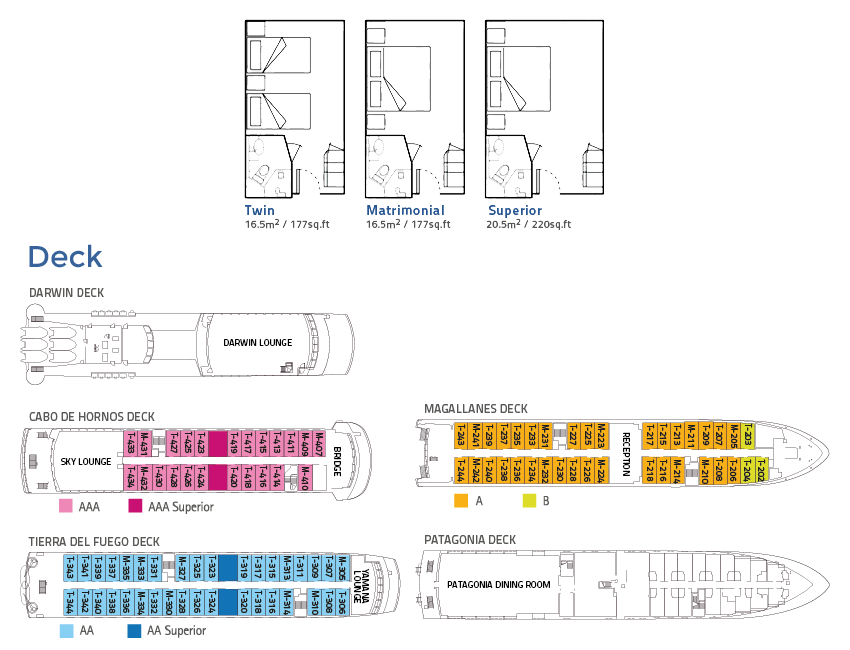Fiords of Tierra del Fuego Punta Arenas - Ushuaia 5 days / 4 nights
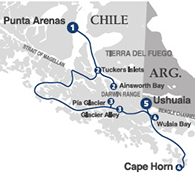
-
Day 1 Punta Arenas
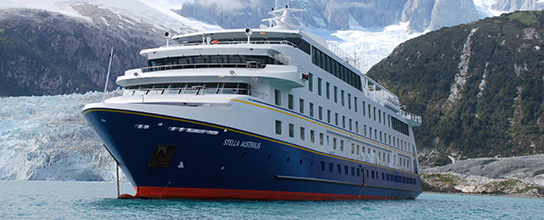
Check in at 1385 O’Higgins Street (Arturo Prat Port) in Punta Arenas between 13:00 and 17:00 (1-5 PM) on the day of your cruise departure. Board the M/V Stella Australis (6 PM). After a welcoming toast and introduction of captain and crew, the ship departs for one of the remotest corners of planet Earth. During the night we cross the Strait of Magellan and enter the labyrinth of channels that define the southern extreme of Patagonian. The twinkling lights of Punta Arenas gradually fade into the distance as we enter the Whiteside Canal between Darwin Island and Isla Grande de Tierra del Fuego.
-
Day 2 Ainsworth Bay - Tuckers Islets
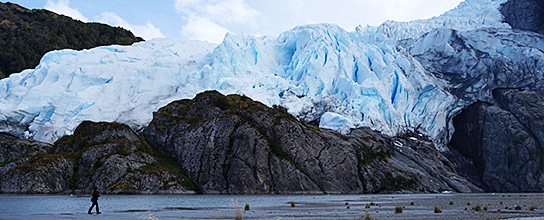
By dawn the ship is sailing up Admiralty Sound (Seno Almirantazgo), a spectacular offshoot of the Strait of Magellan that stretches nearly halfway across Tierra del Fuego. The snowcapped peaks of Karukinka Natural Park stretch along the north side of the sound, while the south shore is defined by the deep fjords and broad bays of Alberto de Agostini National Park. We go ashore at Ainsworth Bay, which harbors copious bird life and a colony of southern elephant seals which can sometimes be spotted from the Zodiacs. Two guided excursions are available: one is along the edge of a stream, peat bog and beaver habitat to a waterfall-and-moss-covered rock face tucked deep inside a pristine sub-polar forest; the other is a more strenuous hike along the crest of a glacial moraine. Both afford views of Marinelli Glacier and the Darwin Mountains.
Leaving Ainsworth Bay behind, we sail west along the sound to the Tucker Islets. After lunch, we board the Zodiacs again for a close-up view of the Magellan penguins that inhabit the tiny islands. More than 4,000 penguins use Tucker as a place to nest, give birth and nurture their chicks. Many other bird species also frequent the area including king cormorants, oystercatchers, Chilean skuas, kelp geese, dolphin gulls, eagles and even the occasional Andean condor. In September and April -- when the penguins live elsewhere -- this excursion is replaced by a short walk to a glacier at nearby stunning Brookes Bay.
-
Day 3 Pía Glacier - Glacier Alley

Overnight we sail around the western end of Tierra del Fuego via the very narrow Gabrial Channel, Magdalena Channel and Cockburn Channel. After rounding the remote Brecknock Peninsula, Stella Australis tacks eastward and enters the Beagle Channel again. By morning we are entering Pia Fjord and boarding the Zodiacs for a shore excursion to Pia Glacier. After disembarking we take a short hike to gain a panoramic view of the spectacular glacier, which extends from the mountaintops down to the sea or a longer much more difficult walk up a lateral moraine of the old Pia Glacier.
No one knows for certain how the hulking mass of snow and ice got its feminine moniker, but one theory says it was named for Princess Maria Pia of Savoy (1847-1911), daughter of the Italian king.
Back onboard the ship, we continue east along the Beagle Channel through an area called Glacier Alley. Living up to its name, the passage features a number of impressive tidewater glaciers flowing down from the Darwin Mountains and Darwin Ice Sheet on the north shore. Most of them named after European countries -- Holland, Italy, Germany, Spain and France.
-
Day 4 Cape Horn - Wulaia Bay
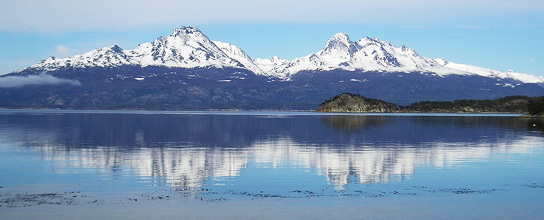
During the early morning we navigate the narrow Murray Channel between Navarino and Hoste islands and drop anchor at historic Wulaia Bay, one of the few places in the archipelago where the human history is just as compelling as the natural environment. Originally the site of one of the region’s largest Yámana aboriginal settlements, the bay was described by Charles Darwin and sketched by Captain FitzRoy in the 1830s during their voyages on the HMS Beagle. This area is also renowned for its mesmerizing beauty and dramatic geography. After a visit to the Australis-sponsored museum in the old radio station -- which is especially strong on the Yámana people and European missionaries in the area -- passengers have a choice of three hikes (of increasing degrees of difficulty) that ascend the heavily wooden mountain behind the bay. On all of these you will be strolling through an enchanted Magellan forest of lengas, coigües, canelos, ferns, and other endemic fauna to reach a panoramic viewpoint overlooking the bay. Before leaving Wulaia Bay, drop something into the wooden mail barrel inside the museum – letters or postcards meant to be hand delivered by future travelers – an ancient mariner tradition revived by Australis.
In the afternoon we cruise across Nassau Bay into the remote archipelago that includes Cape Horn National Park. Weather and sea conditions permitting, we shall go ashore on the windswept island that harbors legendary Cape Horn (Cabo de Hornos). Discovered in 1616 by a Dutch maritime expedition -- and named after the town of Hoorn in West Friesland -- Cape Horn is a sheer 425-meter (1,394-foot) high rocky promontory overlooking the turbulent waters of the Drake Passage. For many years it was the only navigation route between the Pacific and Atlantic, and was often referred to as the "End of the Earth." The park was declared a World Biosphere Reserve by UNESCO in 2005. The Chilean navy maintains a permanent lighthouse on the island, staffed by a lightkeeper and his family, as well as the tiny Stella Maris Chapel and modern Cape Horn Monument.
-
Day 5 Ushuaia

The following morning we sail into Argentine waters and dock in Ushuaia, the world's southernmost city.
Arrival at 08:30 a.m. and 9:30 am according to date of departure.
Vessels
-
Stella Australis
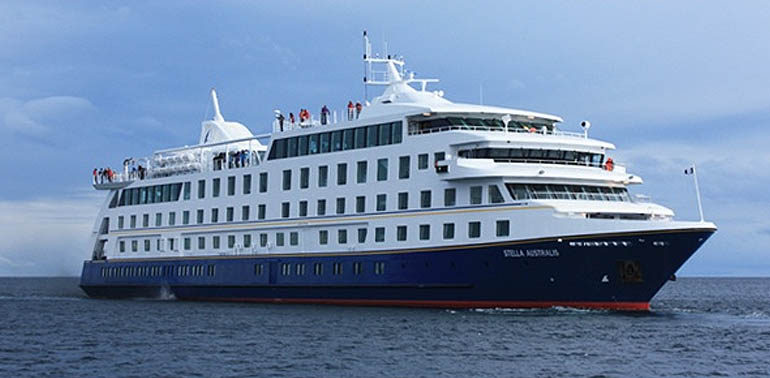
The Stella Australis offers a relaxed stay, while providing breathtaking sights from the decks. Australis cruises allows reaching all of Patagonia’s fabulous venues, attractions, and expeditions. Before you embark on your Patagonia adventure enjoy the comfort of cabins that provide you with incredible ocean views and lavish decor. Wine and dine, mix and mingle, and enjoy our fabulous entertainment on your Patagonia vacation.
Features
Construction Year:2010Passenger Capacity:210Total Cabins:100Cabins
B Cabins:3A Cabins:34AA Cabins:36AAA Cabins:23AA Superior Cabins:2AAA Superior Cabins:2
-
Ventus Australis
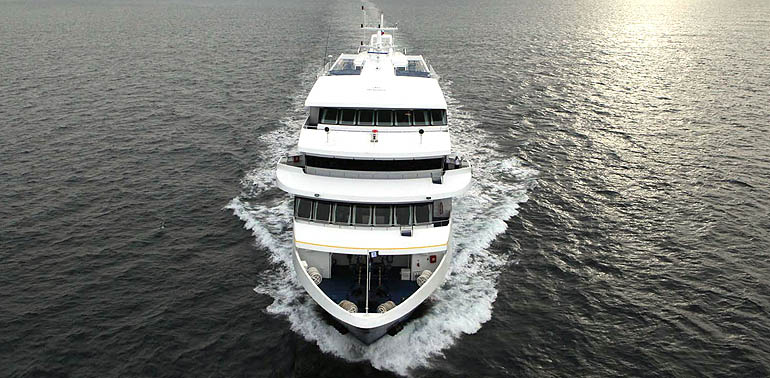
Ventus Australis is the name announced for the new state-of-the-art ship being built for Australis Expedition cruise line.
The name – Latin for "Southern Wind" – reflects Tierra del Fuego's distinctive weather, a factor that has long determined the region's socio-cultural development and that so impressed the early mariners who endeavored to explore Patagonia's southernmost waterways.
Tailor-made for exploring the remote southern tip of South America, all aspects of the 210-passenger ship -- including size, length, draft and engine power -- are designed to give Ventus Australis the extreme maneuverability necessary to navigate narrow fjords and channels where no other cruise ships can venture.
Asenav, the internationally acclaimed Chilean shipyard, is creating our latest masterpiece, just as they did with the three other expedition ships for Australis.
Ventus Australis will feature the latest regulations regarding safety at sea and protecting the marine environment, as all of our fleet does.
When it goes into service in early 2018, Ventus Australis will give travelers a chance to experience the remoteness of Patagonia and step ashore at fabled Cape Horn.
Features
Launching season:2017/2018First Departure:January 2nd, 2018Passenger Capacity:210Total Cabins:100